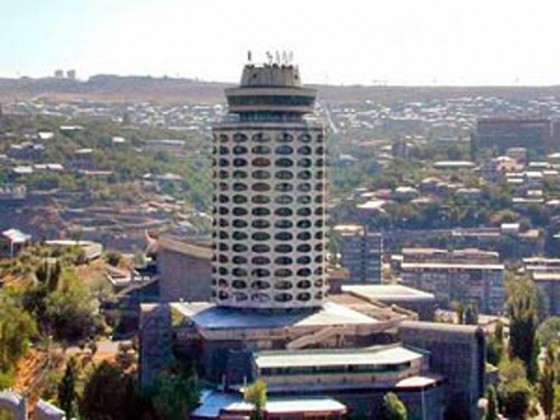
It seems that the Nagorno-Karabakh, temporarily occupied by Armenia, will be the bad end for this ruinous country. The country, which itself is in a difficult economic situation, is forced to provide financial support to the temporarily occupied territory of Azerbaijan.
The Armenian authorities do not hide this. According to their statements, they were forced to give another unscheduled loan to the separatist regime to help it cope with the difficult economic situation in June 2015.
This is a critical issue for Armenia, given the huge external debt of the country. According to the World Bank (WB), the external debt can be considered critical when it exceeds 50 percent of GDP. The experts of the International Monetary Fund (IMF) expect that Armenia’s foreign debt will exceed 50 percent of GDP in 2016 and will grow in the coming years.
Armenia has scanty international currency reserves, which slightly exceed $2 billion. Of course, this means that Armenia itself has to borrow funds to support the separatist regime of Nagorno-Karabakh.
According to the IMF, Armenia’s loans for the separatist region in 2015 will amount to 1.1 percent of GDP. In the future, the IMF expects Armenia to transfer less, namely 0.9 percent of GDP, to support the temporarily occupied lands of Azerbaijan. But according to the IMF forecasts, the GDP volume will be reduced. Armenia can return to the previous volumes only in 2018 in case of a lack of new external challenges.
As it is known, Azerbaijan’s Nagorno-Karabakh area has been occupied by Armenia. It has no economic relations with other countries. So it is directly dependent on the situation in Armenia. Given the deteriorating situation in Armenia, it is easy to predict the future of the separatist regime.
It is obvious that the situation in the separatist region is being worsened. For example, the humanitarian aid sent to the separatist regime amounted to 114.6 million drams in the first half of 2015. For example, the figure was 70.68 million drams in January-June 2014 (a 62 percent growth for the year).
There is also another index, namely, the balance of revenues and expenditures of the population of the separatist region. The population’s income amounted to 73.55 billion drams gives the expenditure worth 74.1 billion drams in the first half of this year. Thus, the deficit has been formed. In other words, the separatist region spends more than it earns.
Bako Sahakyan, the head of the separatist regime, stated that the separatist region is close to economic self-sufficiency. But the facts contradict his words. For example, the gap in the balance of payments can be cited. It amounted to 19.6 billion drams in the first six months of 2015.
The economic situation in the separatist region is totally dependent on Armenia. But Armenia itself is not in the best position. EV Consulting prepares reports on Armenia for the annual rankings of the Global Economic Forum. According to the EV Consulting, even if the growth rates of the economy reach 3.5 percent annually, the Armenian economy will recover only by 2040.
Moreover, some 50,000 people leave Armenia each year. According to the international organizations, Armenia will need 15 years to stop the migration of the population. But some 750,000 people will leave the country by this period. It turns out that there will be no one in Armenia by the time of its restoring the economy… And what will people, living in the occupied territories, do in this situation?
Trend commentator Azad Hasanli
Trend
